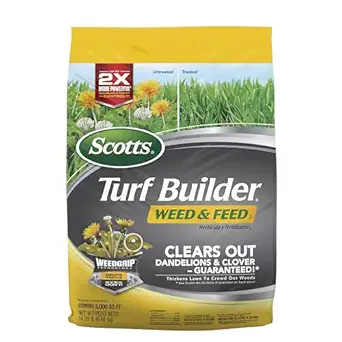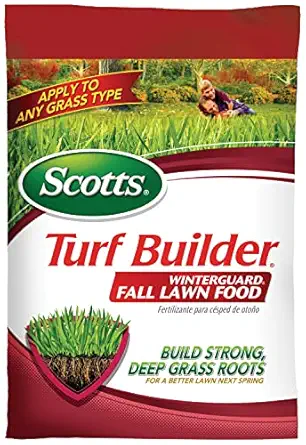Bermuda grass is known for its vibrant green color, durability, and ability to create a dense, manicured lawn. However, achieving and maintaining this beauty requires proper fertilization.
Fertilizer provides essential nutrients that Bermuda grass needs to thrive, grow healthily, and resist pests and diseases. This post will explore everything you need to know about fertilizing Bermuda grass, from understanding its nutrient needs to choosing the right products and timing applications.
Understanding the Nutritional Needs of Bermuda Grass
Bermuda grass thrives when provided with three primary nutrients:
- Nitrogen (N): Encourages lush, green growth and helps the grass recover from stress.
- Phosphorus (P): Supports root development and establishment, especially in young or newly seeded grass.
- Potassium (K): Strengthens the grass against drought, disease, and environmental stressors.
Additional micronutrients such as iron, manganese, and zinc contribute to maintaining the rich green color and overall health.
Types of Fertilizers for Bermuda Grass
- Slow-Release Fertilizers
- Gradually release nutrients over time, providing consistent feeding.
- Ideal for maintaining steady growth without causing sudden spurts.
- Quick-Release Fertilizers
- Deliver nutrients immediately but require frequent applications.
- Suitable for lawns needing a quick boost of nutrients.
- Organic Fertilizers
- Made from natural sources like compost, bone meal, or fish emulsion.
- Improve soil health and promote sustainable lawn care practices.
- Synthetic Fertilizers
- Precisely formulated to meet specific nutrient requirements.
- Often labeled with N-P-K ratios to indicate nutrient content (e.g., 16-4-8).
Recommended Bermuda Grass Fertilizer

Scotts Turf Builder Southern Lawn Fertilizer for Southern Grass
Specially formulated for Southern Bermuda Grass lawns with Scotts All-in-One Particles to build strong, deep grass roots to protect against heat and drought.
Scotts Turf Builder Weed & Feed, Weed Killer Plus Lawn Fertilizer, Controls Dandelion and Clover
Scotts Turf Builder Weed & Feed3 weed killer plus fertilizer kills existing listed weeds and feeds to thicken your lawn and crowd out future weeds.


Scotts Turf Builder WinterGuard Fall Lawn Fertilizer for All Grass Types
Scotts Turf Builder WinterGuard Fall Lawn Food builds strong, deep grass roots for a better lawn next spring.
When to Fertilize Bermuda Grass
Bermuda grass has specific needs during its growing season (late spring through early fall). Here’s a seasonal breakdown:
- Spring (March to May)
- Start fertilizing once the grass emerges from dormancy and begins to green up.
- Apply a balanced fertilizer with a high nitrogen content to encourage growth.
- Summer (June to August)
- Fertilize every 6 to 8 weeks to maintain vigorous growth.
- Use a nitrogen-rich fertilizer for optimal color and density.
- Fall (September to November)
- Apply a fertilizer high in potassium to prepare the grass for winter dormancy.
- Avoid high nitrogen fertilizers during this time to reduce stress.
- Winter (December to February)
- Fertilizing is unnecessary during dormancy, but a soil test can help prepare for spring.
How to Fertilize Bermuda Grass: Step-by-Step Guide
- Test the Soil
- Conduct a soil test to identify nutrient deficiencies and pH imbalances.
- Adjust fertilization based on the results for tailored care.
- Choose the Right Fertilizer
- Select a product that matches the lawn’s needs based on the season and soil test.
- Apply at the Right Time
- Fertilize early in the morning or late in the afternoon to avoid evaporation and sunburn.
- Use Proper Equipment
- Use a broadcast spreader for even distribution.
- Walk at a steady pace to prevent over-application or missed spots.
- Water After Fertilizing
- Lightly water the lawn after fertilization to help nutrients penetrate the soil.
- Avoid overwatering, as it can lead to nutrient runoff.
Common Fertilizing Mistakes to Avoid
- Over-Fertilizing
- Can cause excessive growth, increased mowing needs, and risk of fungal diseases.
- Ignoring Soil Testing
- Leads to guesswork and potential over- or under-application of nutrients.
- Fertilizing Dormant Grass
- Wastes fertilizer and provides no benefit during the winter dormancy period.
- Uneven Application
- Results in patchy growth and an uneven lawn appearance.
Expert Tips for Fertilizing Bermuda Grass
- Use Iron Supplements: If your lawn looks yellowish despite proper fertilization, an iron deficiency may be the cause. Apply iron sulfate or chelated iron for a deep green color.
- Mow Before Fertilizing: Ensure the grass is at the proper height to maximize nutrient absorption.
- Aerate Annually: Aeration improves nutrient uptake by allowing fertilizers to penetrate the soil more effectively.
- Practice Grasscycling: Leave grass clippings on the lawn after mowing to naturally recycle nutrients.
Conclusion
Fertilizing Bermuda grass is an essential step in creating a lush, green lawn that stands out in any neighborhood. By understanding your lawn’s specific needs, choosing the right products, and applying them correctly, you can enjoy a healthy and thriving lawn year-round. For the best results, combine proper fertilization with other best practices like mowing, watering, and aeration.
Ready to transform your Bermuda grass lawn? Start fertilizing today and experience the difference!